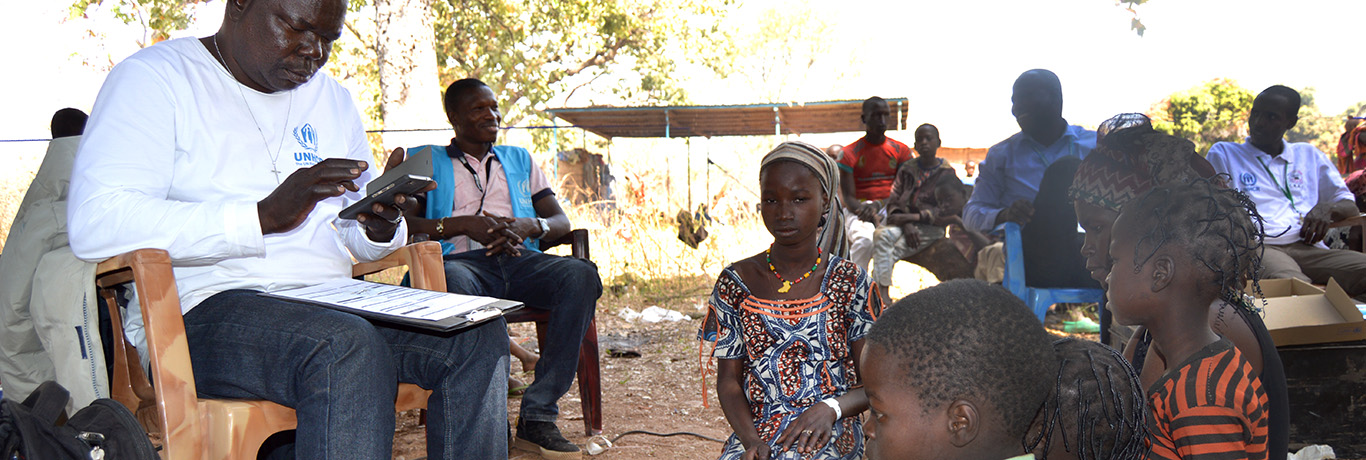Refugees and asylum seekers should also be regularly consulted on registration issues and invited to give feedback, including comments, suggestions and complaints. Maintaining a plurality of consultation and feedback channels that are tailored to the operational context is a core aspect of an AGD and people-centred approach, enabling people to participate in decisions that affect their lives as well as better understand their rights, obligations and entitlements.
UNHCR must continually work to understand the information and communication needs of communities within a population of concern. Find out what they want to know and the channels through which they want to share and receive information. Obtaining this data may be achieved through activities like focus group discussions (FGD) and other interactions with individuals from different refugee communities (outreach volunteers, refugee committee members and others), individual counselling or through monitoring discussions on social media, for example. In addition, other techniques for gathering this kind of information include adding a short questionnaire onto initial and continuous registration interviews, or by conducting surveys or inteviews9 – whether online, by telephone, or through outreach activities. As such, a participatory and inclusive approach to identifying information needs and appropriate communication channels is an inexpensive and resource-light activity that all Offices should be in a position to realize through existing processes and activities. This approach strengthens trust and accountability between stakeholders and ensures that the information shared responds directly to the information needs of refugees and asylum-seekers.
While certain information needs vary from community to community, the following issues are relevant in all continuous registration contexts and must be the subject of ongoing communication, dialogue and feedback, without which the related processes are unlikely to be fully understood or well-utilized:
- New processes such as biometric enrolment or the introduction of new documentation;
- Reminders about ongoing processes like document renewal, registration of births, as well as certain rights, entitlements or obligations related to registration.
- Procedural or operational changes including change in procedures, change in operational partner, changes in admissibility to registration-related activities
- Changes in policies and laws of the host country related to registration, including any changes to the role of the State or UNHCR in this carrying out this function.
- New opportunities, for example, to access assistance or services associated with registration.
Related information materials should be produced and maintained by UNHCR on a continuing basis. Many people are likely to assume that out-dated web pages and worn-out or damaged posters contain information that is itself out of date, even if this is not necessarily the case. The Registration and Identity Management Officer should also ensure that all UNHCR staff and partners are aware of continuous registration messages, in the event they are asked registration-related questions in the course of their own work.


